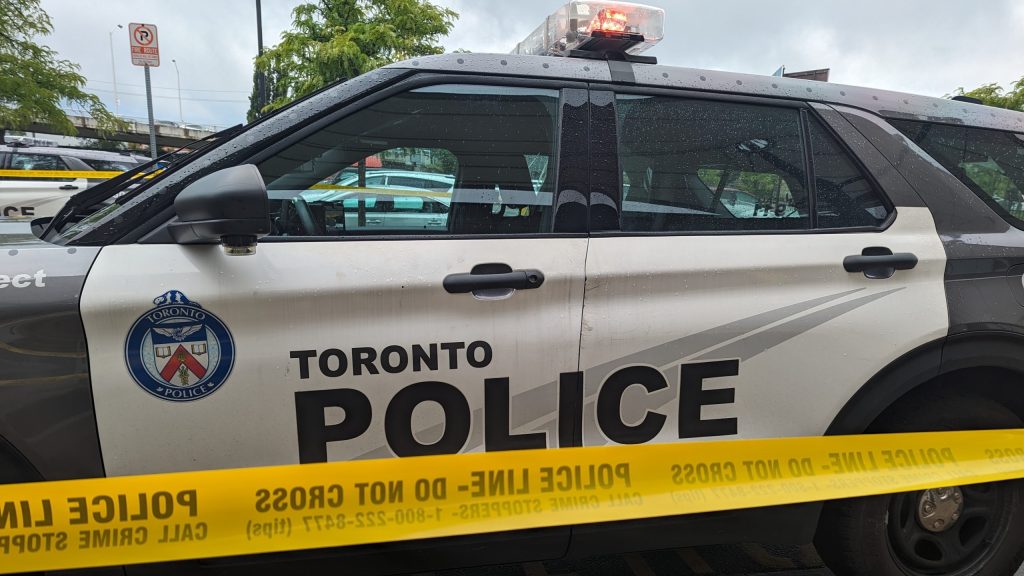A first-of-its-kind service in Canada that connects mobile phones to low-orbit satellites could be a game changer for residents without cell service in remote areas of the country, as well as a pivotal moment in public safety.
The satellite-to-mobile service, announced by Rogers last week, will allow subscribers without traditional cell service to send and receive text messages, including text-to-911 emergency services if they are enabled by municipalities. Rogers will eventually expand the technology to support apps, data and voice services.
Once voice service is available, it will mean that anyone with a smartphone featuring satellite connectivity, available in newer models, will have access to 911-only voice services, not just subscribers.
The technology could fill gaps in cell service across the country.
Until last year, the Village of Clayton, southwest of Ottawa in Lanark Country, was in a so-called “dead zone.” Clayton got its first cell tower in June last year. Five more towers are needed to provide coverage to all rural residents and roads.
“We had an incident one time where someone had a cardiac arrest at a ball field,” said Kurt Greaves, the chief administrative officer for Lanark County, who said bystanders had difficulty contacting paramedics. “You don’t realize how much you rely on everybody having 911 in their pocket until you actually need it.”
“Anytime you can improve communication it’s fantastic,” said Greaves.
The technology also has the potential for use as part of Canada’s National Public Alerting System, which enables emergency management organizations across the country to send public warnings about impending danger or disasters.
The “Holy Grail” of Rogers satellite-to-mobile technology, said Carmi Levy, an independent technology analyst, is a fleet of nearly 8,000 low-orbit satellites operated by SpaceX’s Starlink that fly about 550 kilometres above Earth. Premier Doug Ford cancelled a $100-million contract to provide satellite internet to 15,000 remote homes and businesses in Canada with Starlink, owned by Elon Musk, in March in retaliation for the Trump tariffs.
Levy said the sheer number of satellites, combined with their proximity to Earth, means that users can connect in real time when compared with traditional satellites, which orbit at 35,000 kilometres, severely limiting their usability because of delays in bouncing the signal up and then back down.
Traditional satellite phones have “been seen only as a stopgap solution until better technology is available,” said Levy. “This is that better technology.”
A U.S. company, Lynk Global, provides the final piece of the puzzle, converting the satellite signal into one that is compatible with a cellphone.
Rogers is offering the service to all Canadians regardless of their mobile carrier — for example a Bell subscriber who wants to sign up for the satellite-to-mobile technology because they don’t have cell service at the cottage — through a free beta trial that will run until October. The technology is only necessary in places without cell service because smartphones default to cell in areas with coverage.
There are limitations though. Users need a clear view of the sky as well as a fairly new cellphone that has been satellite optimized. Currently, the service is available south of the 58th parallel, which excludes Canada’s northern territories.
The CRTC directed telephone and wireless companies to upgrade their systems to allow text-to-911 service, which they have done, according to the CRTC. But 911 call centres, operated provincially and municipally, would also have to upgrade their systems to enable the service, which is typically meant for use by hearing- or speech-impaired Canadians.
The announcement though couldn’t be timelier, coming out on the same day as news from the Canadian Radio-television and Telecommunications Commission that is it holding public consultations to improve Canada’s National Public Alerting System, including ways to fill gaps in the system.
The commission was unaware that Rogers was launching the new service, but said in an interview that the technology could potentially be used to send out alerts, which are disseminated by a company called Pelmorex Corp., owned by the Weather Network.
Pelmorex sends alerts via television and radio, as well as cell broadcasts, a mobile technology that sends messages to compatible wireless devices within a geographic area, which is a different technology than the text messaging being offered by Rogers Satellite.
But the CRTC is open to discovering whether the new technology is compatible, which Rogers says it is.
”Definitely as part of this consultation, we want to learn from the industry on what are the technical aspects that need to be solved in order to extend those alerts to other technologies, including satellite,” said a CRTC spokesperson.
Critics have called for a review of the alert system, which was under intense scrutiny for not being used by the RCMP in 2020 in Nova Scotia during a shooting rampage in which 22 people were killed.
“Our concern is not so much that there will be another terrible incident,” said Monica Auer, executive director of Forum for Research and Policy in Communications, which has called for a review, “but rather it is incumbent on the regulatory authority to actually let us know how well the system is working, and to do that regularly.”
In his interview with the Star, Levy recounted driving through a massive storm on the Trans-Canada Highway near Sault Ste. Marie recently and only realized, when he hit an area with cell service, that alerts had been issued for tornadoes.
“There are so many areas across Canada that literally do not have service,” said Levy. “And that is a massive problem that is not talked about as much as it should be,” he said. “Solutions like Rogers Satellite help close that gap and shine the light on this gnawing problem in rural parts of Canada.”
The satellite-to-mobile technology launched by Rogers has been in use in a number of markets around the world including the U.S., New Zealand, Japan and Australia.
Rogers said it is working with its partners to enable voice as quickly as possible and will share updates of the system with its customers.



